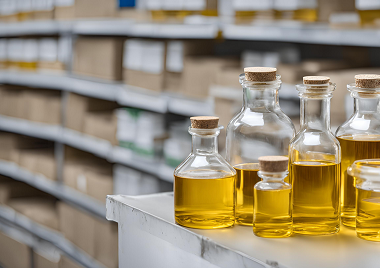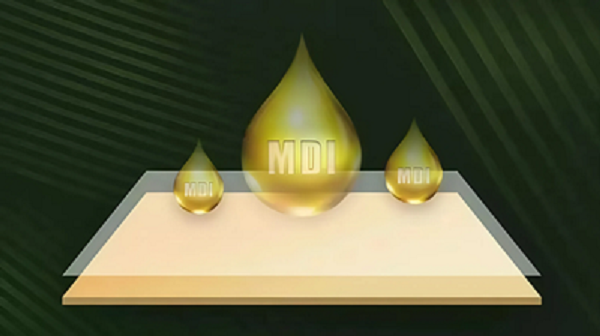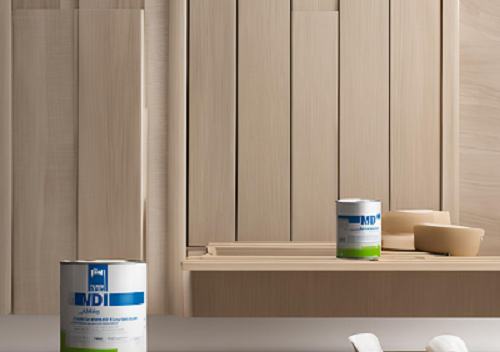- Home
- Products
- News
- Case
-
Factory Show
- German Dieffenbacher paving system
- German Dieffenbacher Continuous Flat Press Machine
- German AnThon Saw
- German Dieffenbacher Air Dryer
- Thermal energy center
- Canadian Kadant long veneer slicer
- German Dieffenbacher Maier Strand Flaker
- German Dieffenbacher OSB Blender
- German GreCon Supporting EWS Quality Monitoring System
- Swiss Baumer ColourBrain RawBoard 4.0
- Swiss Steinemann Sanding Machine
- Italian IMAL-PAL Super Screen
- German AnThon Saw
- chip bin
- Contact Us
- About Us
MDI is the core keyword of Huasheng formaldehyde-free artificial board
Exploration Series 3/ MDI is the core keyword of Huasheng Formaldehyde-free Artificial Board
The formaldehyde in artificial board mainly comes from adhesives. In order to enjoy the performance and price of artificial board products that are better than solid wood, and to avoid the harm of formaldehyde, the combination of formaldehyde-free adhesives and artificial boards is the general trend.
01 Artificial Board Adhesives
Because artificial boards are used in large quantities in home building materials, and the formaldehyde release of artificial boards mainly comes from the adhesives used in the production process, the development of formaldehyde-free or low-free formaldehyde adhesives has become a development trend in artificial boards and even the home furnishing industry.
At present, the adhesives used in processing artificial boards are mainly: urea-formaldehyde resin glue, phenolic resin glue, and melamine glue, all of which are made from formaldehyde as raw materials.

Urea-formaldehyde resin glue UF uses formaldehyde and urea as the main raw materials. The full name is urea-formaldehyde resin adhesive, abbreviated as urea-formaldehyde glue and urea-formaldehyde resin. The finished product is an insoluble, infusible translucent solid with a relatively light color. Urea-formaldehyde resin glue is an adhesive with good performance, low price, simple manufacturing and wide application. Its characteristics are: resistance to weak acids and weak alkalis, good insulation performance, and the main disadvantage is that it is not water-resistant and easily decomposes when exposed to moisture and heat. At the same time, it has poor initial adhesion, large shrinkage, large brittleness, and poor weather resistance (referring to the stability under changes in temperature, humidity and pressure). Urea-formaldehyde resin glue is mainly used in the production of medium (high) density fiberboard.
Phenolic resin glue PF is made by polycondensation reaction of benzene and aldehydes in the presence of a catalyst. The finished product can be liquid, powder and film. The characteristics of phenolic resin glue are high chemical stability, high bonding strength, water resistance, oil resistance, wear resistance, corrosion resistance, aging resistance, good heat resistance (can withstand 120 degrees high temperature under long-term use), good insulation performance and high strength.
Melamine resin glue (MF) is formed by the polycondensation of melamine and formaldehyde. Liquid melamine glue is a milky white uniform viscous substance, and the cured melamine glue is colorless, transparent and rich in light color. The characteristics of melamine are high chemical activity, good thermal stability, resistance to boiling water, chemical resistance and good electrical insulation. Among them, it is better than phenolic resin glue and urea-formaldehyde resin glue in terms of heat resistance and water resistance. Melamine is mainly used in plywood production. Among these three adhesives, urea-formaldehyde resin glue (UF) is used in the largest amount.
02 Decoding of formaldehyde-free MDI glue
If you want the board to be formaldehyde-free, you must use formaldehyde-free adhesives, that is, adhesives that are not prepared with formaldehyde and substances that decompose to produce formaldehyde as direct raw materials. Whenever you talk about formaldehyde-free boards, you must mention MDI glue. MDI is the most familiar formaldehyde-free glue in the industry, and MDI technology is rapidly becoming a solution for "no formaldehyde addition".

The chemical name of MDI is diphenylmethane diisocyanate. There are many classifications of MDI, mainly:
(1) Isocyanate (MDI), refers to a single isocyanate.
(2) Polymerizable isocyanate (PMDI), refers to a mixture of diphenylmethane diisocyanate and polyphenylmethylene polyisocyanate in a certain proportion. PMDI is the adhesive used in the production of artificial boards, and some people simply call it MDI glue.
(3) Emulsifiable isocyanate (EMDI).
In addition to the advantage of being formaldehyde-free, isocyanate adhesives have a strong polarity and activity in their own structure, which can react with wood to form a chemical bond between the wood and the glue layer, and can react with moisture in the wood. Therefore, the boards made with isocyanates have high bonding strength and good water resistance.

Compared with traditional adhesives, MDI adhesive is used in the production of artificial boards. In addition to no formaldehyde added, its advantages are: excellent water resistance and weather resistance, especially in terms of heat insulation, sound insulation, wear resistance, oil resistance, elasticity, etc., which are unmatched by other synthetic materials. The chemical properties are very stable, not easy to volatilize and deteriorate, and have strong stability. Compared with traditional adhesives, to achieve the same adhesive effect, the amount of MDI adhesive applied is less, and it can cover the production of all grades of oriented structural boards OSB/1~OSB/4, and the release of benzene and TVOC also tends to zero. Hubei Huasheng OSB and LSB series products all use zero formaldehyde MDI ecological adhesive, pioneering the era of formaldehyde-free artificial boards.
Get the latest price? We'll respond as soon as possible(within 12 hours)
